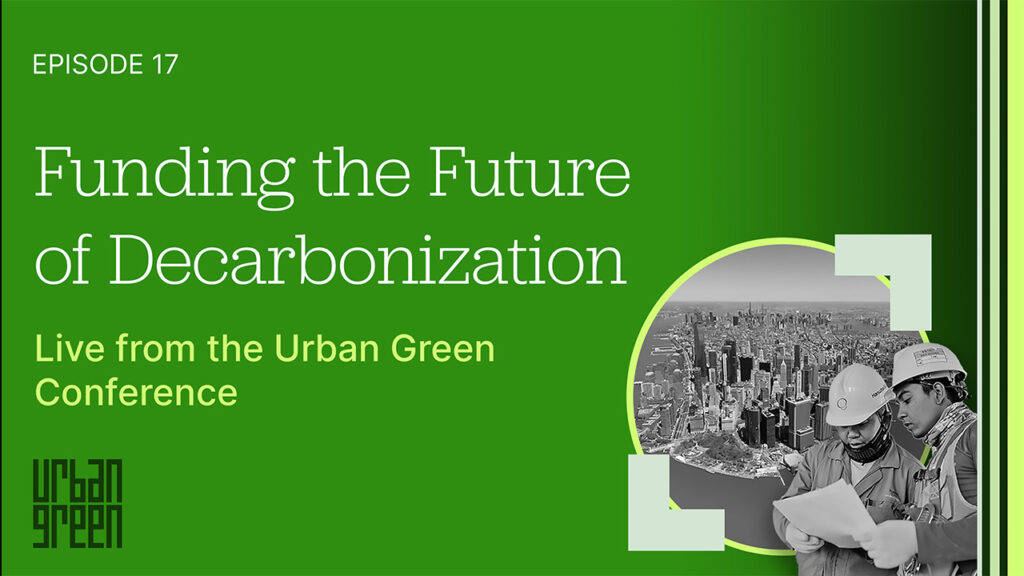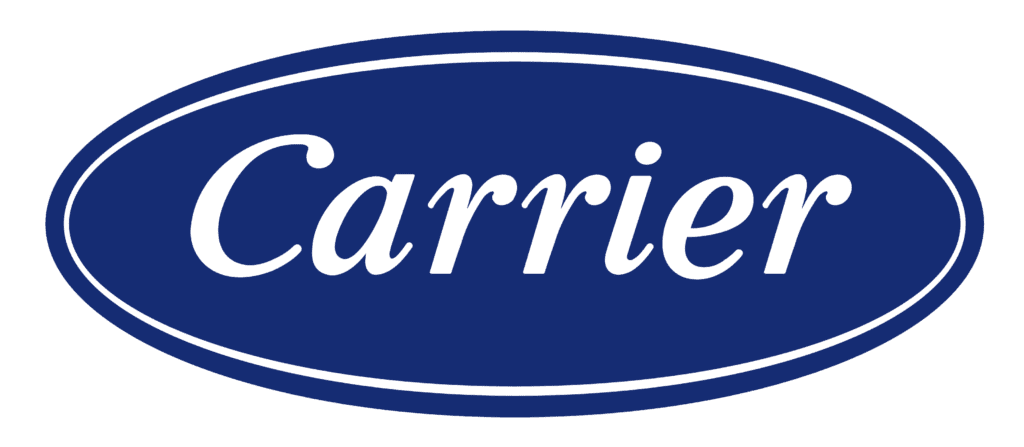
Published July 21, 2025
Live from Urban Green’s 2025 annual conference, this special episode of Building Tomorrow features an exciting conversation about a new concept for a program that would dramatically simplify decarbonization projects and drive down costs.
The panel discussion is moderated by Chris Halfnight, Urban Green’s Senior Director of Research and Policy.
Thank you to our lead sponsor, Carrier, for supporting this podcast!

Speakers
Chris Halfnight (Moderator)
Senior Director of Research & Policy, Urban Green Council
James Geppner
Senior Project Manager, NYSERDA
Joe Chavez
Deputy Director, NYC Mayor’s Office of Climate and Environmental Justice
Susan Leeds
Climate Finance Consultant, Garrison Associates
Marc Zulaga
Co-founder & Chief Revenue Officer, Cadence OneFive
Q&A
Q: How are disadvantaged communities involved in the conversation surrounding the city’s climate justice goals?
Joe Chavez, Deputy Director, Sustainable Buildings, NYC MOCEJ : In 2017, New York City passed Local Laws 60 and 64 to assess environmental equity issues and develop a plan to incorporate environmental justice into the fabric of City decision-making. This legislation centers on three main products: a report, a mapping tool, and a plan. To carry out this work, the local law mandated that the Mayor and City Council appoint an independent Environmental Justice Advisory Board (EJAB). EJAB is led by the Mayor’s Office of Climate & Environmental Justice and comprises external environmental justice leaders, including advocates, academics, and public health experts, to advise the City as it implements these laws and to bring this work to New Yorkers through public hearings and other forms of engagement. The EJAB’s charge is to ensure the work is grounded in the lived experiences of New Yorkers in the city’s EJ communities.
Q: Is this model based on any existing successful precedents?
James Geppner, Senior Project Manager, NYSERDA: This concept is comprised of several components (bulk procurement, a state revolving fund, an aggregator, etc.) and each have strong precedents. As one example, state revolving funds are widely used across the country to provide low-cost capital for water infrastructure. In New York State, the Environmental Facilities Corporation operates a state revolving fund that has deployed billions of dollars since its establishment to fund water infrastructure projects that otherwise may be difficult to finance.
Q: Isn’t this just C-PACE with more guardrails?
Susan Leeds, Energy Finance Consultant, Garrison Associates: C-PACE financing is also repaid with a property tax assessment — but that’s where the similarity ends.
C-PACE is a loan to a building owner from a private, for-profit lender; whereas this model is a public/private partnership that provides access to public capital. Importantly, this model provides centralized LL97 project installation services; C-PACE does not. When using C-PACE, buildings must procure all project components on their own and LL97 compliance is not assured (though C-PACE may help an owner comply). This model allows buildings to benefit from lower costs achieved through bulk procurement, standardization and by operating at scale. The model’s cost of funding would be lower than C-PACE because it is sourced through highly rated municipal bonds rather than reflecting a private lender’s cost of capital. Additionally, C-PACE lenders apply underwriting criteria to prospective borrowers, whereas under this model all covered buildings (with few exceptions) would be eligible to participate.
NYC Next: Facing down the future
Read our recap of the Urban Green 2025 conference, NYC Next: Shaping Building Decarbonization!
Keynote conversation w/ Rory Christian
Rory Christian, Chair and CEO of NYS Public Service Commission, discusses how NYC can achieve a just transition to sustainable energy.
NYC Next: Shaping Building Decarbonization
Check out the recordings and photos from NYC Next: Shaping Building Decarbonization!